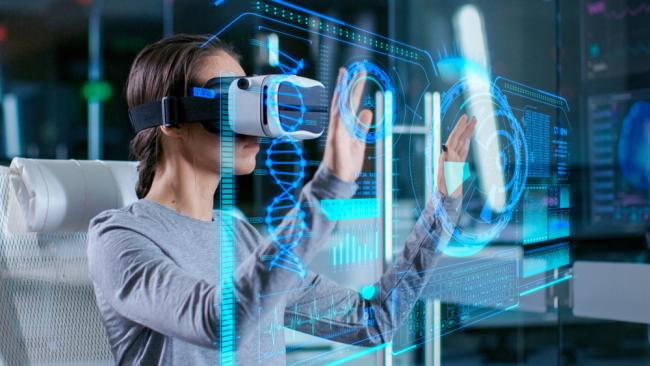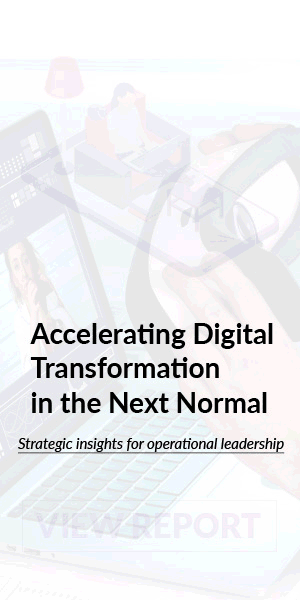14 FAQs: A Beginner’s Guide to Evaluating AR, MR, and VR Solutions for Enterprise Workplaces

Between the challenges of remote work introduced by the pandemic and the accelerating technological progress that’s affecting every facet of the economy, businesses are looking towards immersive tech to bridge the gap. These technologies include Augmented Reality (AR), Mixed Reality (MR), and Virtual Reality (VR).
They’re not just for video games anymore. We’re seeing a clear trend at the enterprise level. In a July poll of 100 field service executives, we found that those who leverage AR are more than 2.5x as likely to say they were able to continue their 2020 plans with little impact on their business. At large, data from ARtillery Research also estimates that the global enterprise AR market will grow upwards of $14.2B by 2022.
There’s clearly a market for enterprise AR. The problem, however, is knowing how to get started. In this article, we’re going to go over some frequently asked questions (FAQs) to give you some things to consider about these solutions.
1. How do we protect customer and user data?
Cybersecurity is one of the biggest enterprise priorities of the decade, and it’s crucial that your solution follows best practices. CGS’s Teamwork AR leverages Transport Layer Security (TLS), an industry standard for secure communication with end-to-end encryption over an insecure network like the internet. TLS is widely used in the HTTPS protocol for sending sensitive data like passwords or financial information. If there’s a lock next to your browser’s search bar, then the site you’re on is using TLS.
Additional security measures include a communication engine that complies to ISO 27001, an international information security standard, and turning off legacy security protocols by default. Teamwork AR also explicitly gives users the ability to not store recordings if they choose. If so, content is briefly stored in memory while being transmitted before it’s deleted.
2. How quick/easy is it to get started?
Many outsourcing solutions take anywhere from a few weeks to several months to get up and running. However, Teamwork AR is meant to be used immediately. If you know how to use a smartphone, then you can immediately use the AR, image recognition, and collaboration features. Expect a longer runway for projects that involve custom applications or dedicated hardware.
3. What are the top use cases?
- Remote assistance
- Training, learning, and development
- Technical support and maintenance
- Sales demos
- Add a visual aid to complex manufacturing
- Medical: Telemedicine, surgery, training
- Replace on-site meetings
Essentially, anything that would benefit from a richer visual experience can benefit from immersive technology. This lets organizations cut down on travel expenses, speed up troubleshooting, and increase interpersonal collaboration, even at a distance.
4: What’s the best way to determine a pilot project or minimum viable product (MVP)?
AR, VR, and MR use cases are best defined by their reach. To start thinking about your product requirements, think about your users, their pain points, and how you’re going to address them or add value with the technology. Here are some useful starter questions to get you thinking.
- Is the need for web only? Or can we use an app?
- Are the end users customers, employees, or both?
- How many devices will be used? What type of devices?
- Is hands-free mandatory? If so, have you selected hardware?
- If successful, how much could the solution decrease costs or increase revenue?
- Are there any “low-hanging fruit” opportunities that would be easy to achieve?
5: How many people can be supported concurrently?
Some solutions are limited in the amount of users that can be on a platform at once, which can be a challenge for globally distributed teams. Teamwork AR’s Group Video Rooms can support up to 50 users at once.
6: What are the best pricing models?
Different developers offer different pricing models, and the right one for you will largely depend on your use case. For instance, some charge ‘per seat’, or by the amount of total support users. If you’re only going to need a small number, this can be a great option.
Others charge per development hour. This is great for simple products, but, as most enterprise AR applications require over 1000 development hours, this cost can add up, and it’s not uncommon for a budget to be somewhat unpredictable.
Lastly, there’s subscription-based models that are similar to other software-as-a-service (SaaS) products. This model is the most consistent and great for organizations that want to implement a solution at scale. While Teamwork AR is subscription-based, CGS has deep expertise is AR and VR content development services and education AR as full service capabilities.
7: What do we need to prepare ahead of time for a successful roll out?
Defining use cases and creating examples of how the solution will solve tangible problems is the best way to start the discussion. This is especially true for user adoption; though many people are naturally skeptical of new technology, they are much more likely to want to use it if they can see how it makes their lives easier.
Another key step is getting buy-in from core business stakeholders, including the IT department, the business division that will represent the end users and the executive team. IT will be supporting this technology, we should involve them early and often so that they can build out the necessary infrastructure before the solution goes into production; the end users should be building requirements and use cases and the executive team should be involved in the strategic vision and receive the reports that showcase the vast set of metrics that drive business KPIs and ROI.
8: What’s the best approach for creating content?
While your content will be highly dependent on your unique business, we have a few general tips. First, don’t get locked into proprietary cloud systems. While it may seem tempting to go for one of these ‘all-inclusive’ packages, it creates problems down the line because it restricts agility and flexibility.
Second, look for a system that can ingest basic content like PowerPoint presentations or images from Adobe software. Being able to reuse assets decreases total cost of ownership and lowers the technical barriers to entry by letting anyone upload content.
Third and finally, if you’re going to be building 3D models, look for cloud services that convert to AR quickly and painlessly.
9. What are the best features for collaboration?
Being able to host multiple users at once and the option to view AR as a group are two of the most important features for enabling collaboration. Simply put, make sure that everyone can see the same thing. Along these lines, allowing users to annotate on the screen is also quite useful. Digital Twin is another AR technology that allows users to train and show proficiency using virtual versions of equipment. It provides a real-life, full size version of the equipment, processes, actions and gestures are fully trackable on-line and offline. Proofs of concept are showcasing that true muscle memory is created that can aid in completing the actual repairs / procedures in real-life settings.
10. What integrations should I look for?
You don’t want your teams to have to bend over backwards to get their AR solution to function in a way that truly plugs into day-to-day work. Ideally, it should just work. Start by looking at the integration points of each business unit. For instance, IT service management providers like ServiceNow can use AR to create/append service tickets, so that’s an important integration point. Some companies prefer a web-based approach to remove the barrier to entry or potential adoption issues in having to download / provision an app.
11. What kind of support should we expect from a vendor?
Today’s enterprises should expect 24x7 support from an approachable, knowledge support team. There should be a fast turnaround in real time, via chat, phone, or email. For multinationals, global performance is also a must; live language translation and support can unite your global team. By removing language barriers, you can tap into a larger talent pool to collaborate on projects or resolve issues.
12. How should I evaluate which tech to use: AR, VR, or MR?
AR overlays virtual objects onto a real-world environment, making it ideal for use cases like remote assistance and replacing on-site meetings because everyone can see the same thing.
MR goes one step further by anchoring virtual objects onto the real world. A great example is in complex manufacturing, where assembly instructions can go on top of the machinery and then update throughout the job.
VR is a fully immersive digital environment. A top use case is learning and development (L&D) because it allows trainees to experience doing a job in an isolated and risk-free environment. For instance, an operator can learn how to use heavy machinery without having to take the machine off the line and without bringing any risk to either the machine or themselves.
13. Who develops and owns the knowledge base?
The answer is it can be either the organization or the XR partner. The knowledge base can come from within the organization or the partner with expertise can create a knowledge base as part of agreed upon professional services. Typically, the ownership lies with the organization but again it depends on the integration.
A more dynamic approach is to put grow the knowledge base with internal SMEs. Several partner organizations are pursuing a “user generated content” strategy. Collaborative sessions are stored, edited, and deployed as learning objects for the organization.
14. What should I look for as a standard when thinking about Connectivity?
Thinking about offline usage is key. Often, in the field or industrial conditions, there can be poor wifi/LTE/no 5G, many companies are looking for solutions that allow them to have education and image recognition tech setup to play without Internet. Obviously, collaboration features require internet connectivity to conference. Finally, securing Bluetooth headphone capabilities for noise cancellation is also very important in some high-decibel industrial settings.
Resources
https://www.cgsinc.com/blog/impact-augmented-reality-healthcare
https://www.cloudflare.com/learning/ssl/transport-layer-security-tls/
https://advisera.com/27001academy/what-is-iso-27001/
https://artillry.co/artillry-intelligence/ar-global-revenue-forecast-2018-2023/
https://www.cgsinc.com/blog/ar-and-mixed-reality-business-how-get-started
https://www.cgsinc.com/blog/augmented-reality-can-improve-remote-support-covid-19-era
https://www.cgsinc.com/blog/6-expert-predictions-about-field-service-management-post-covid

